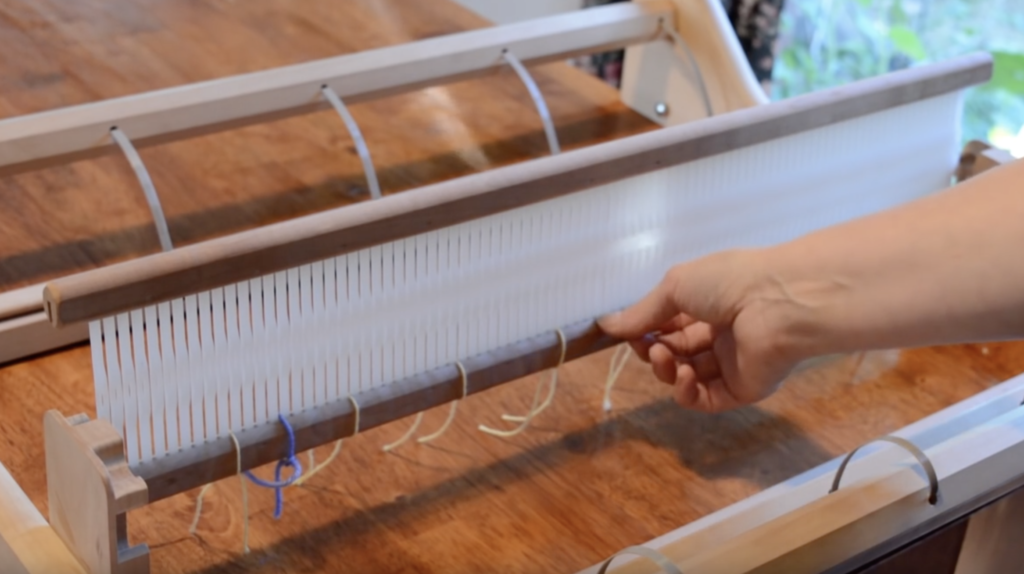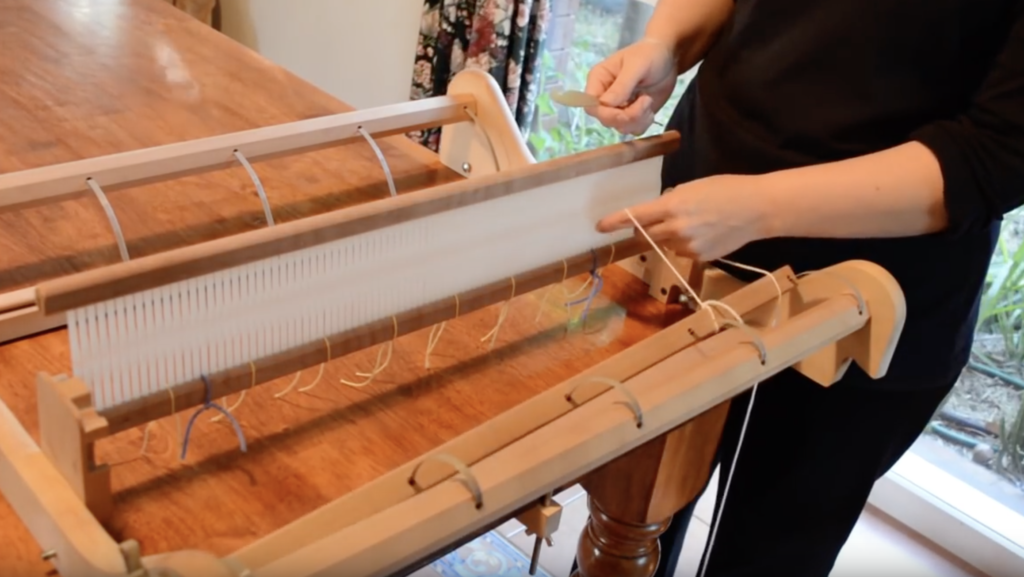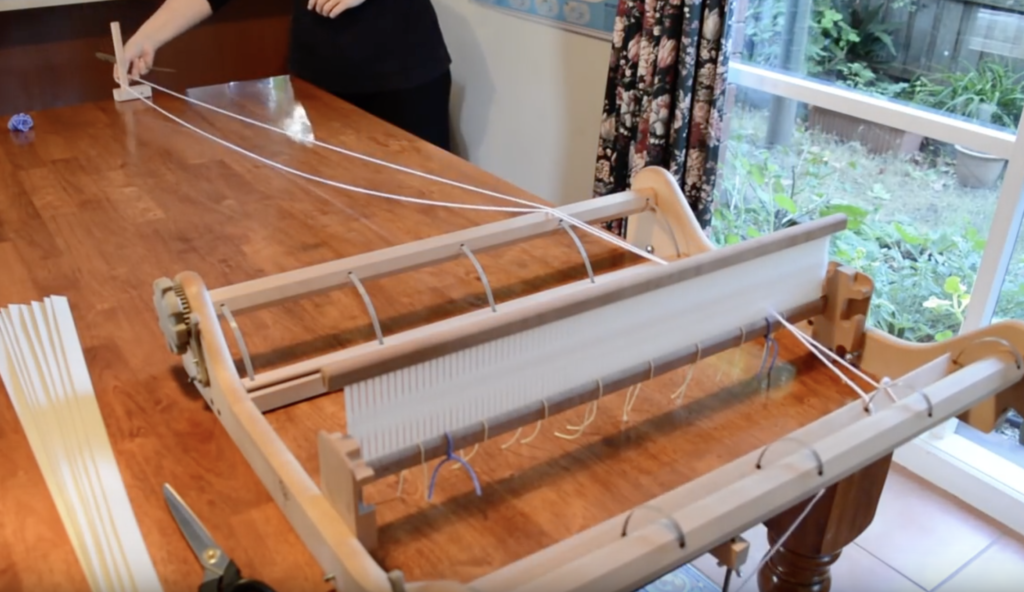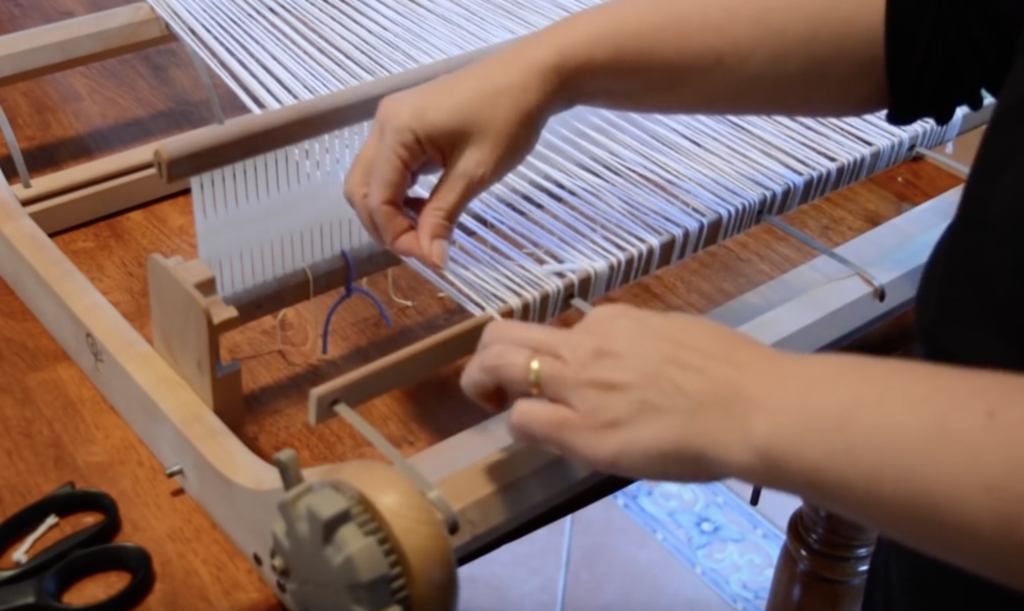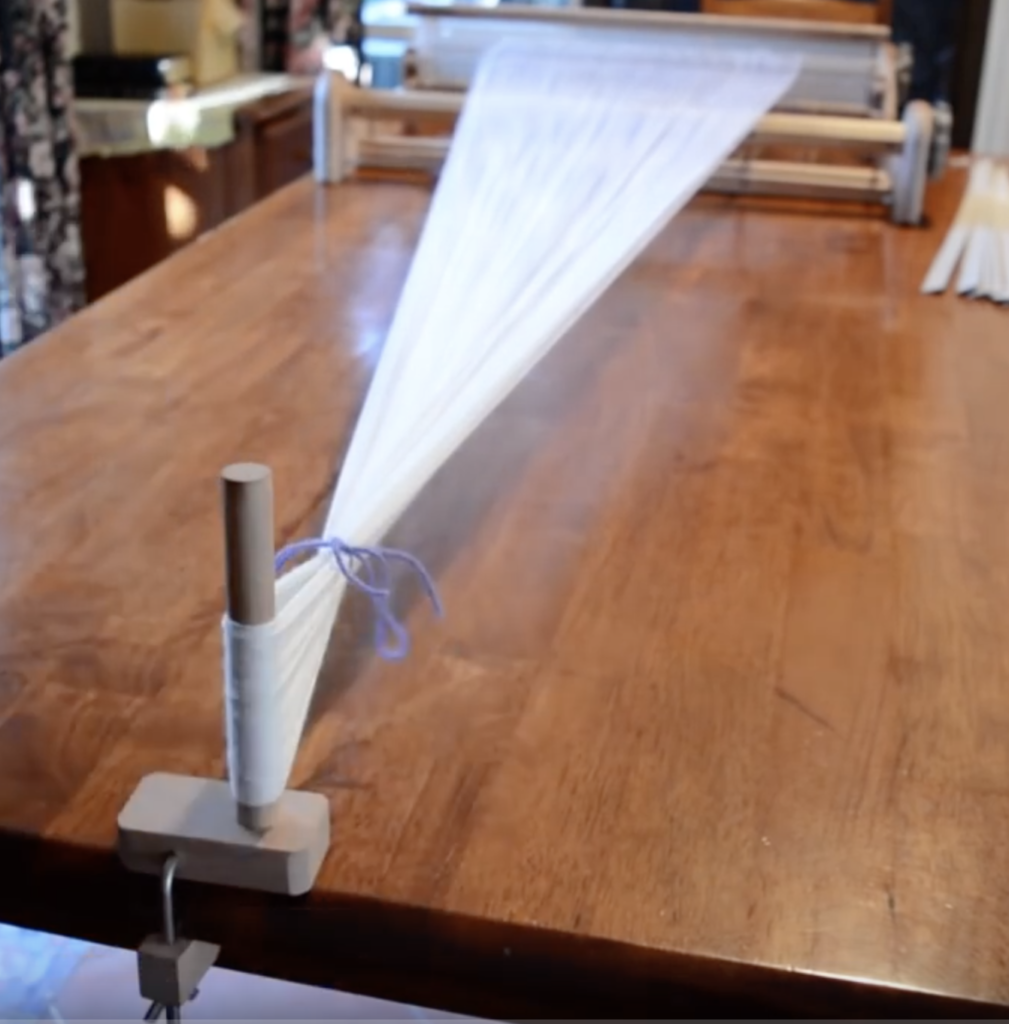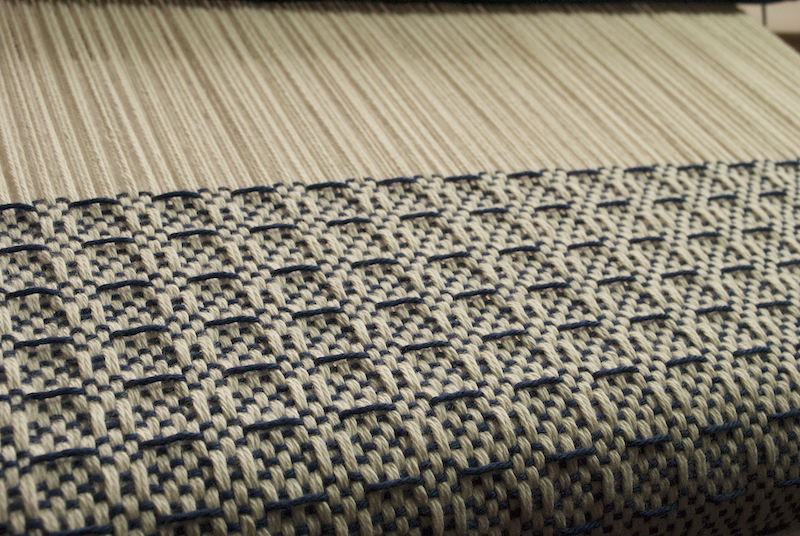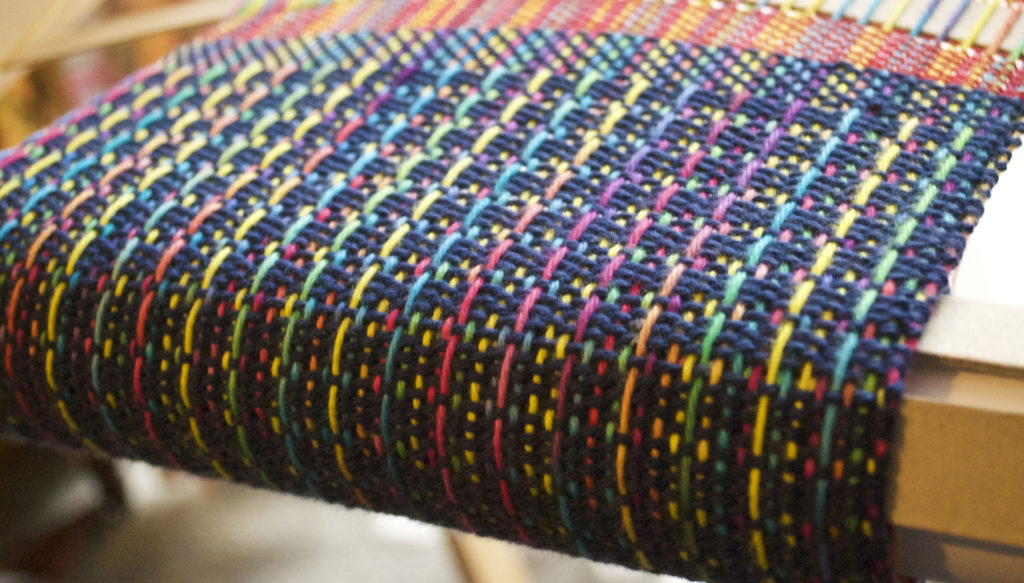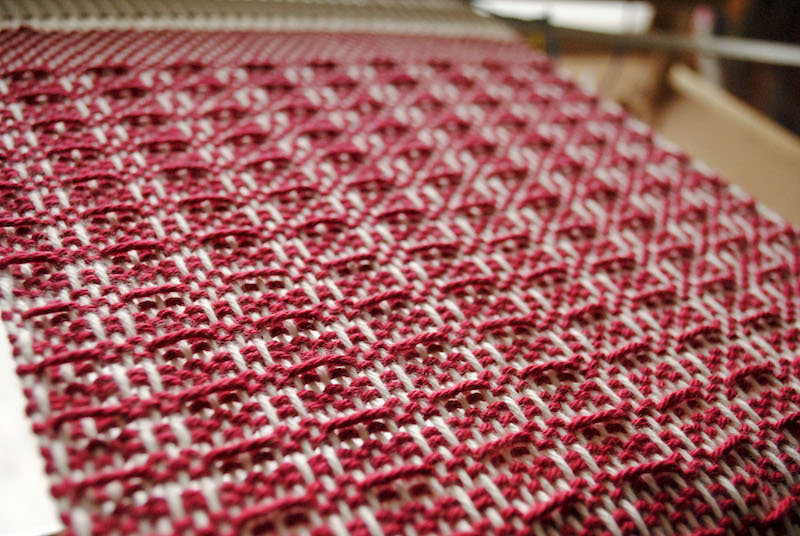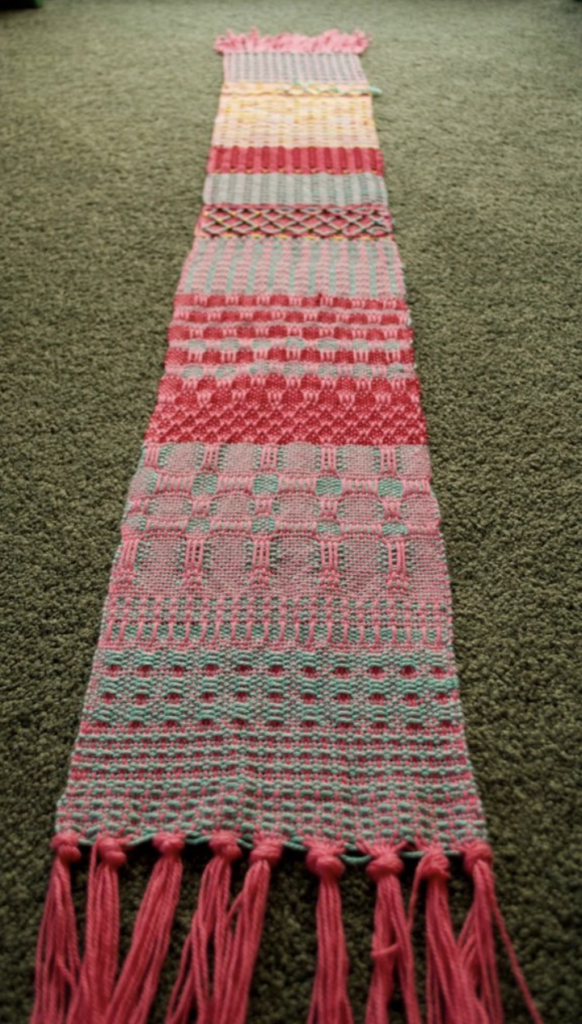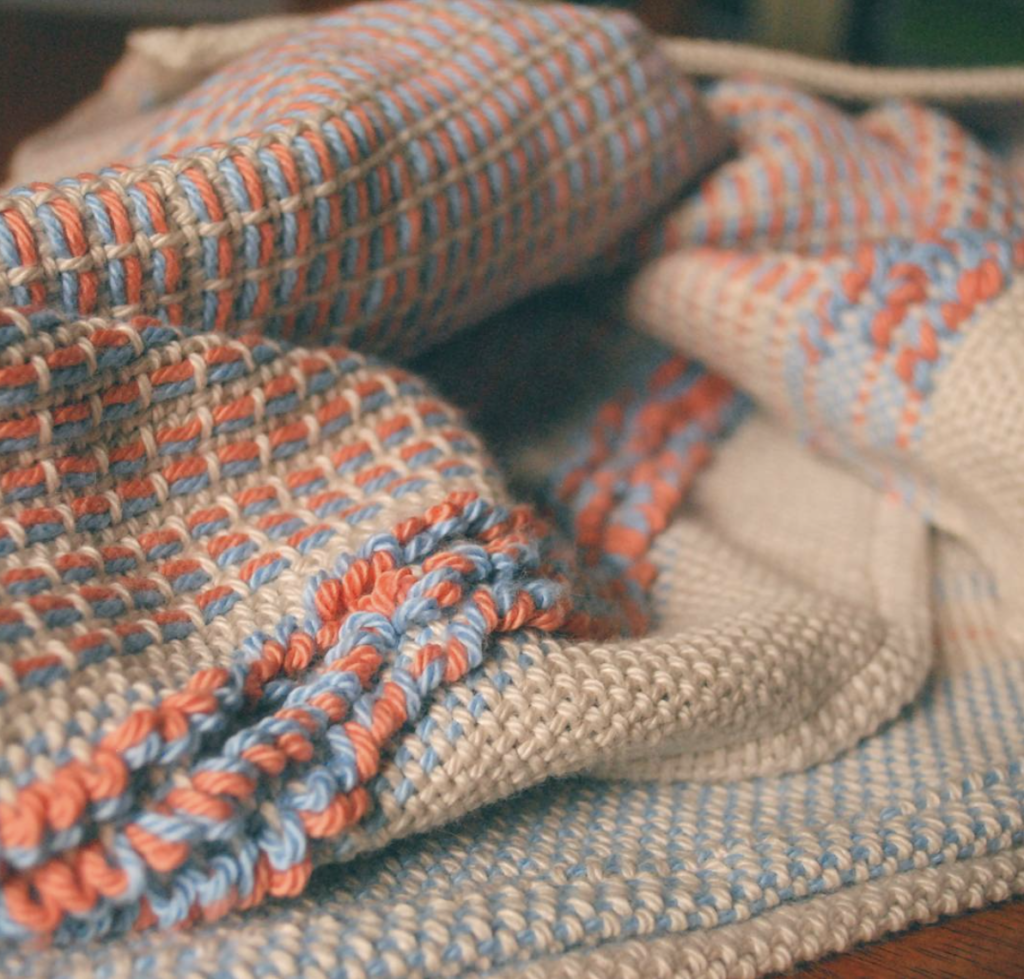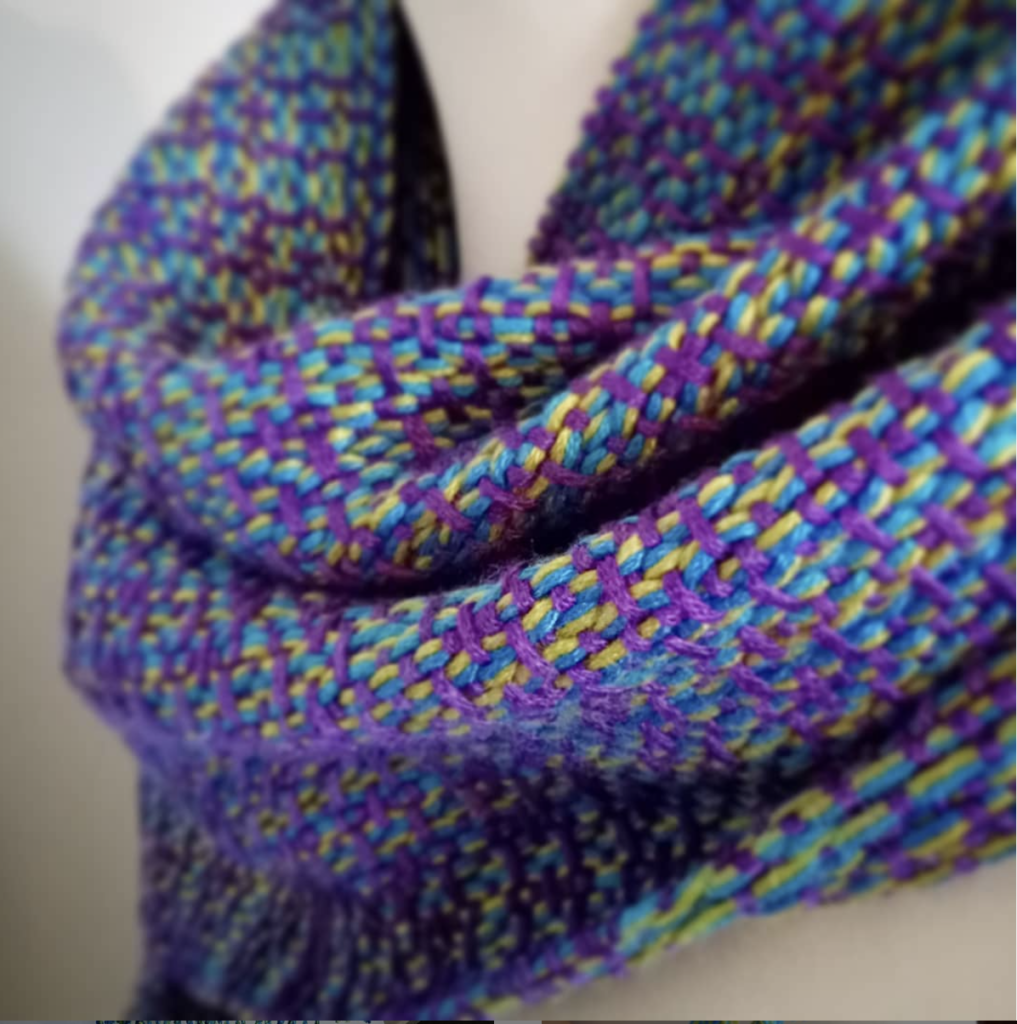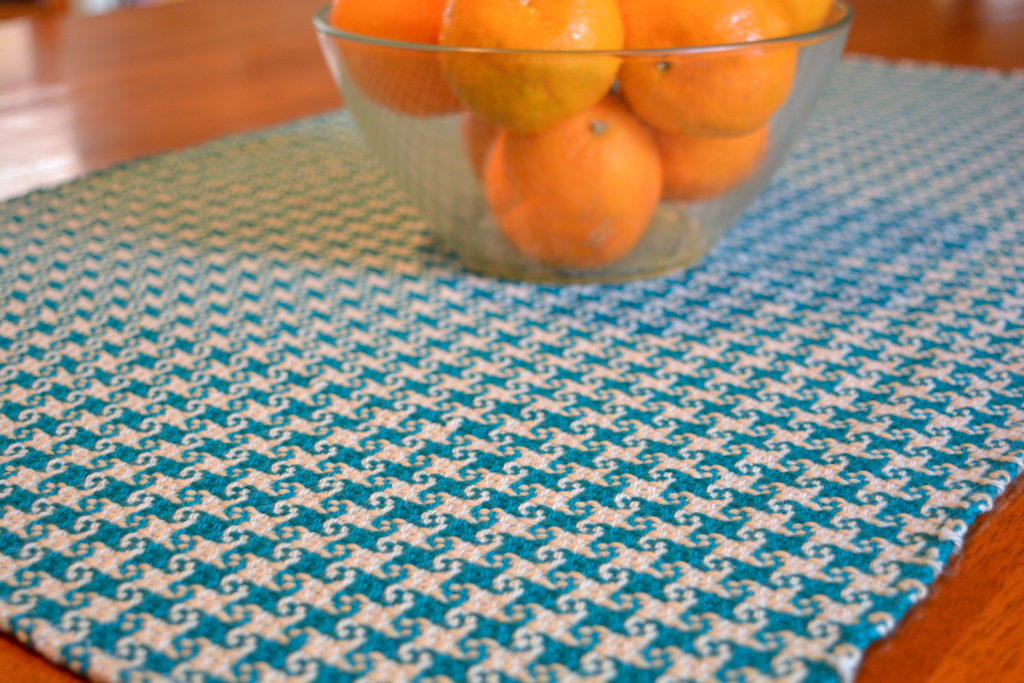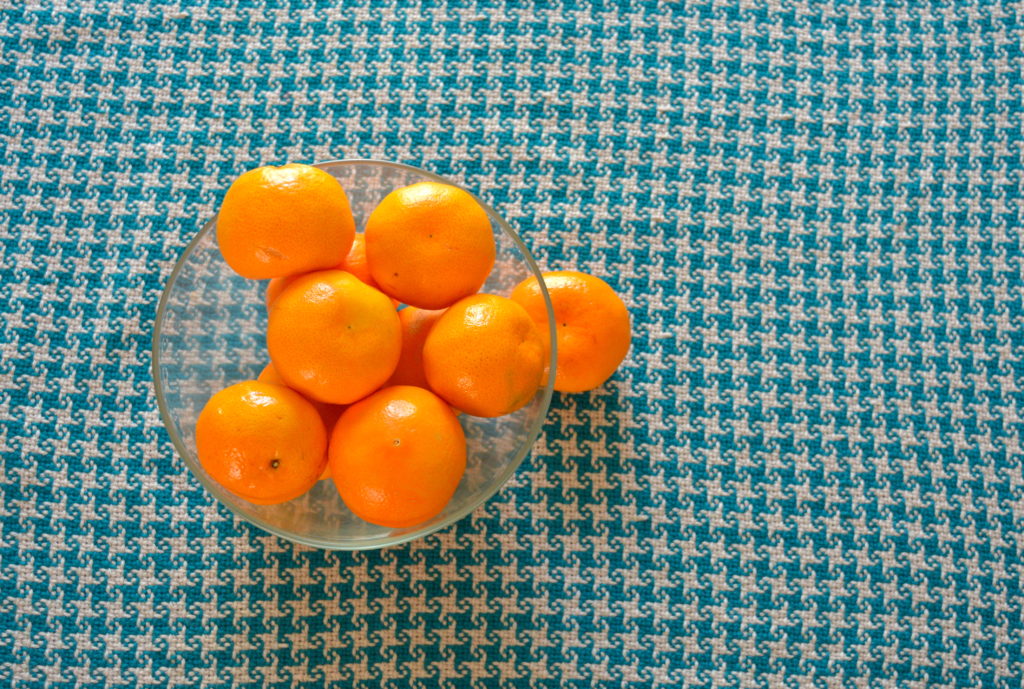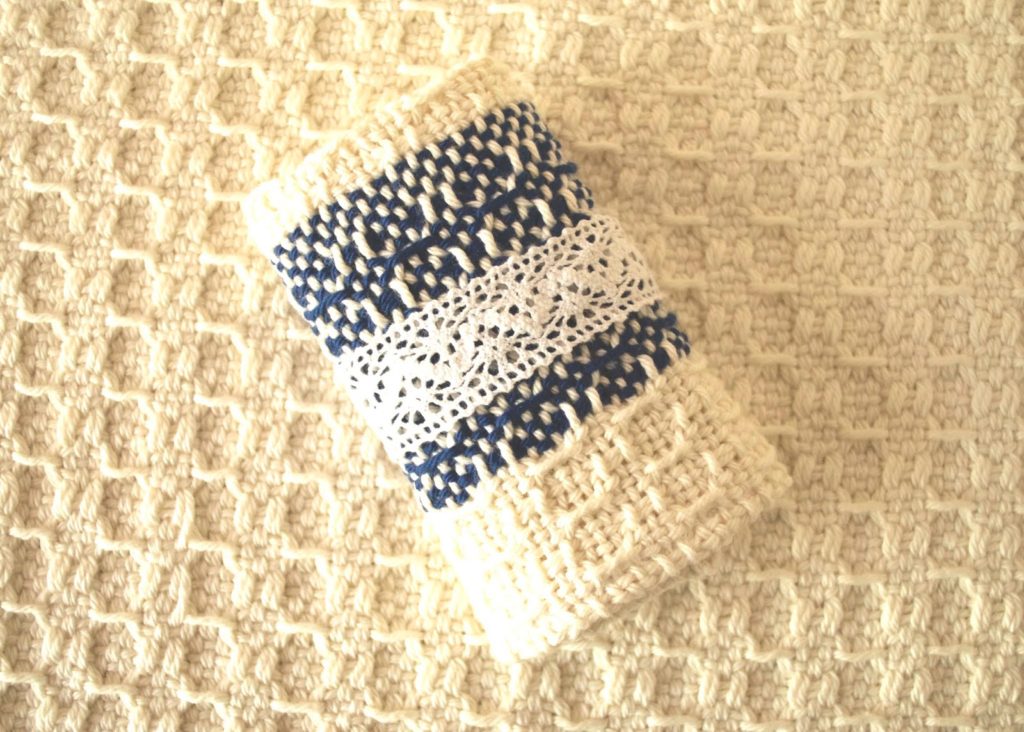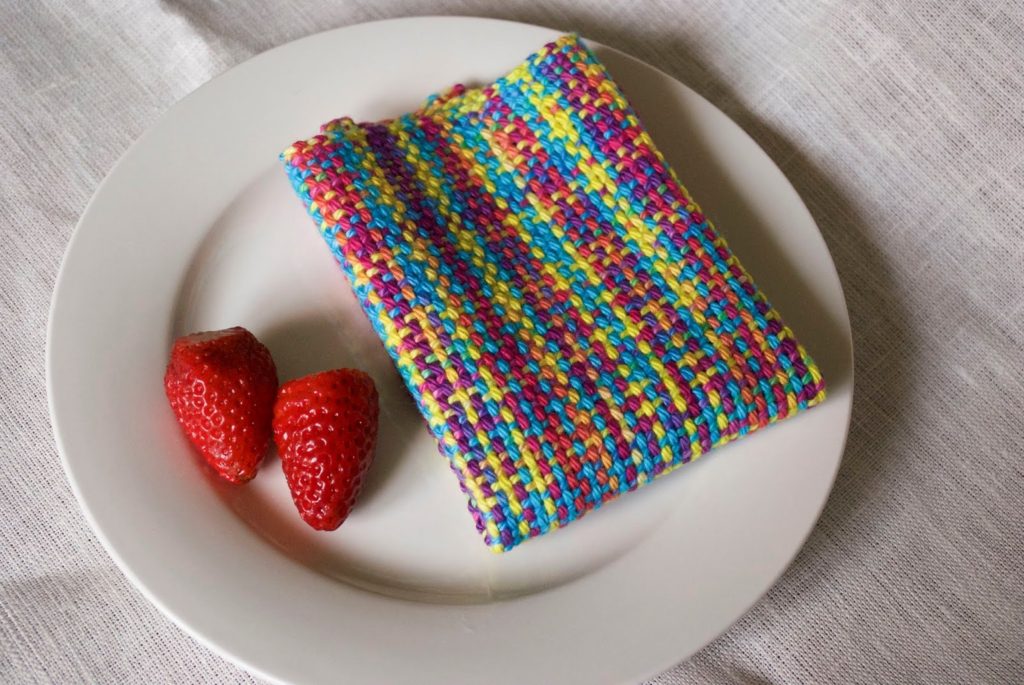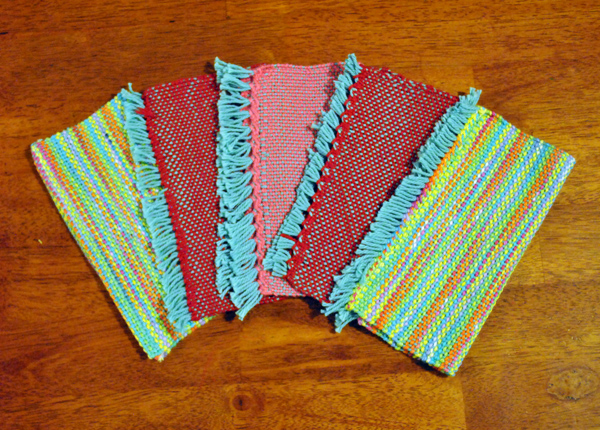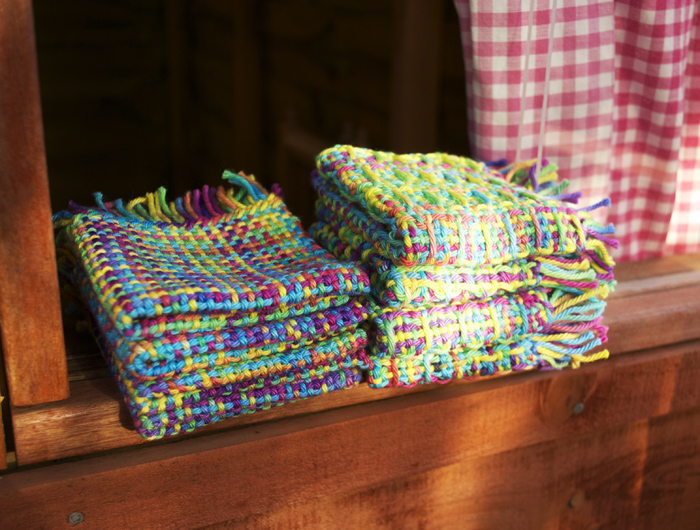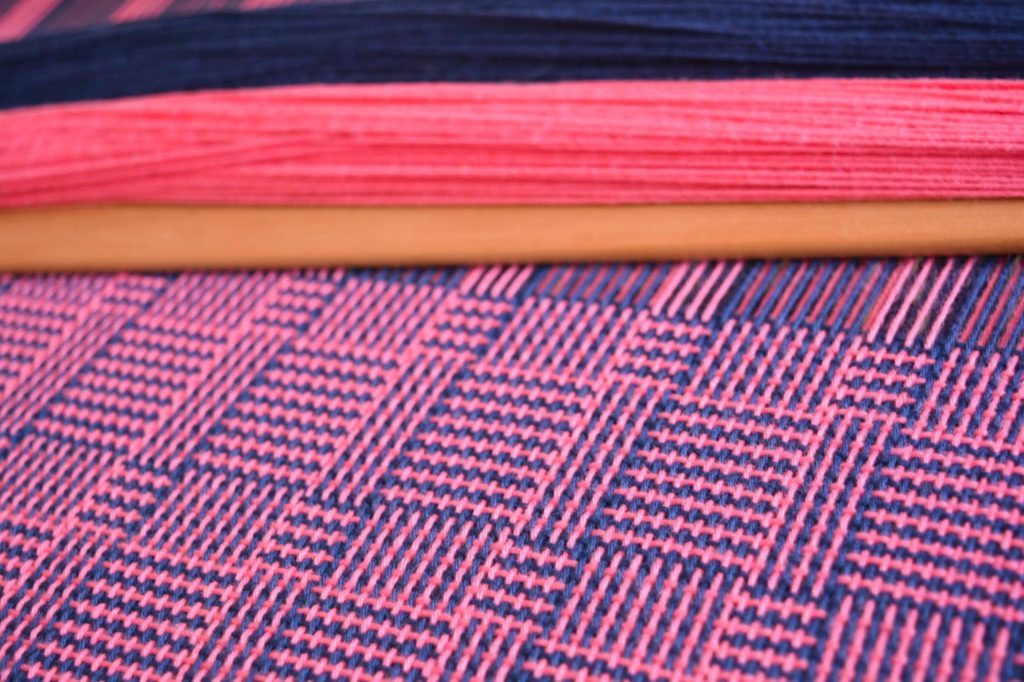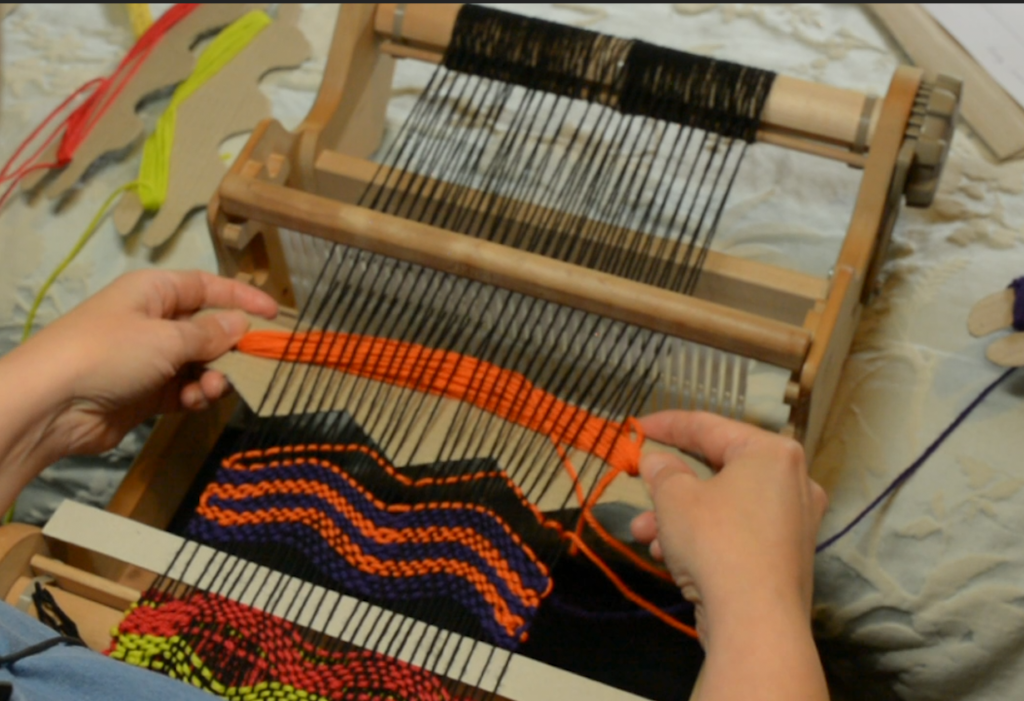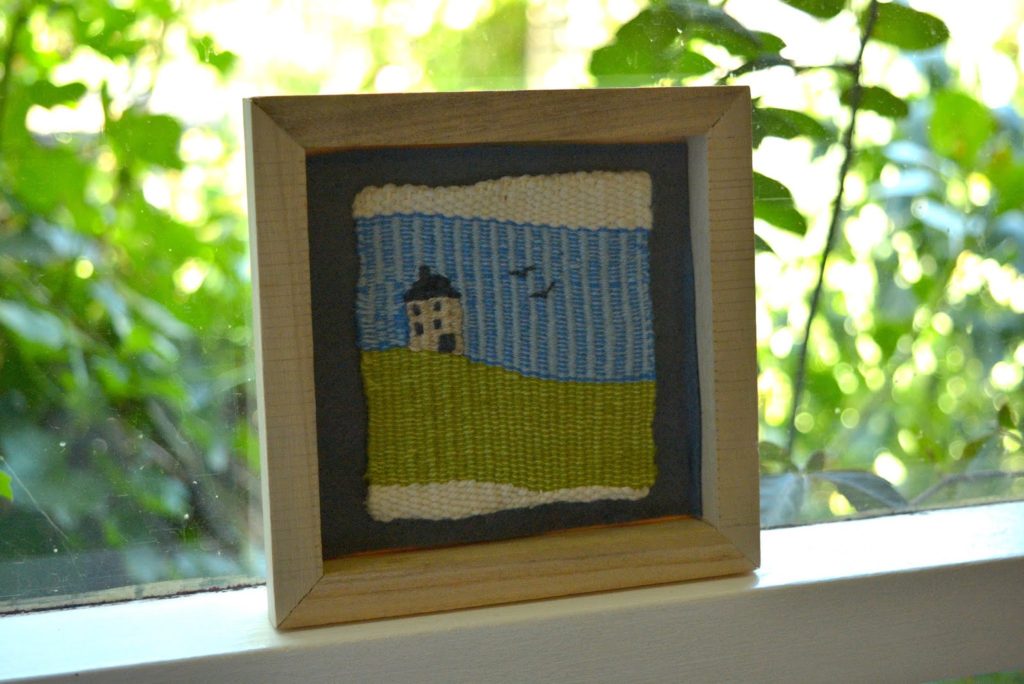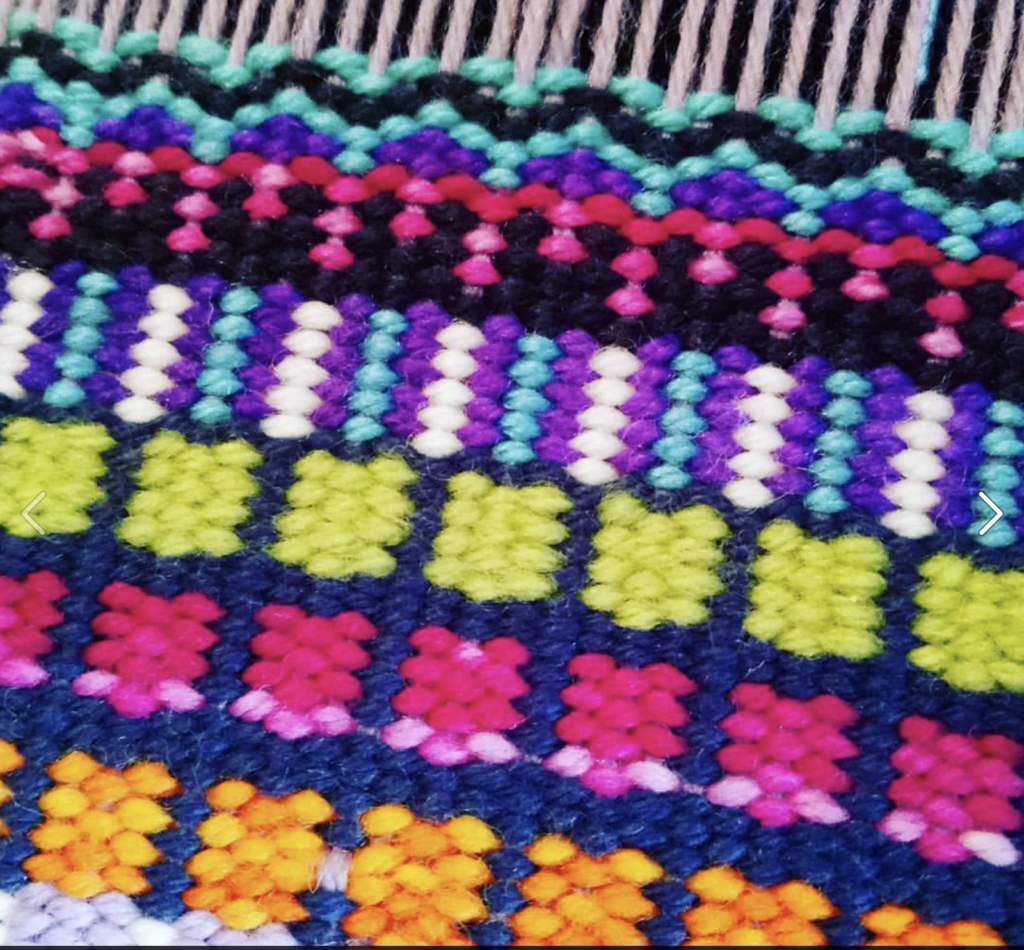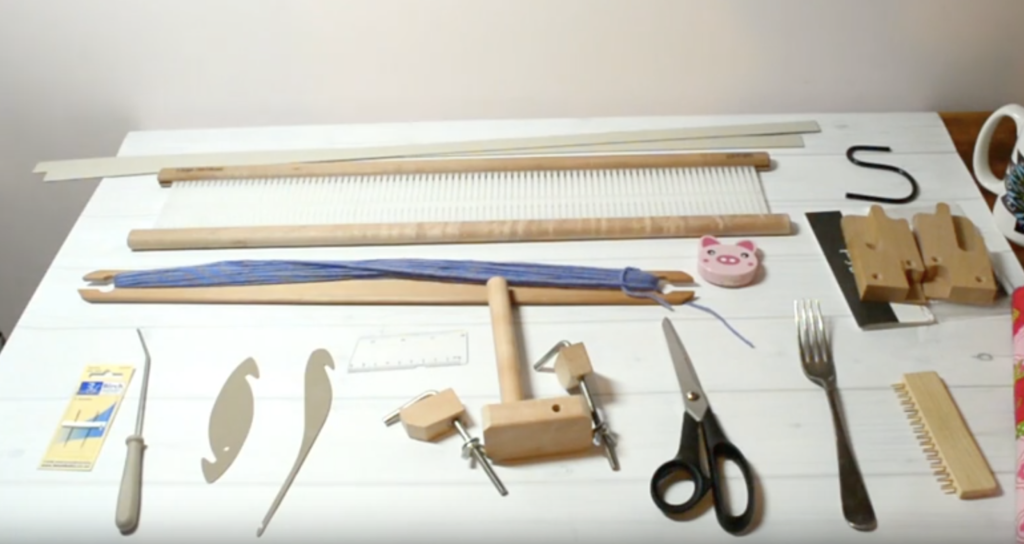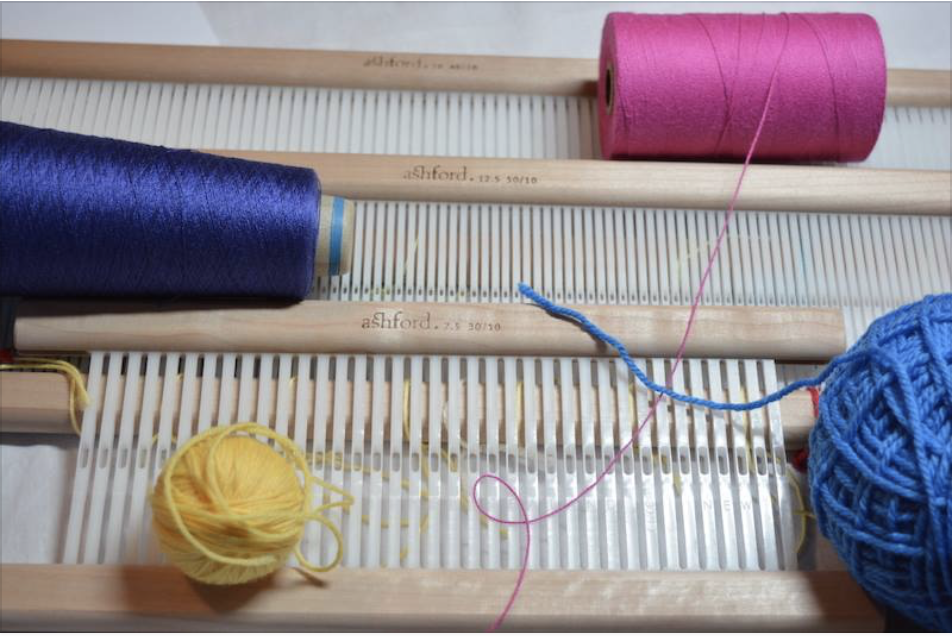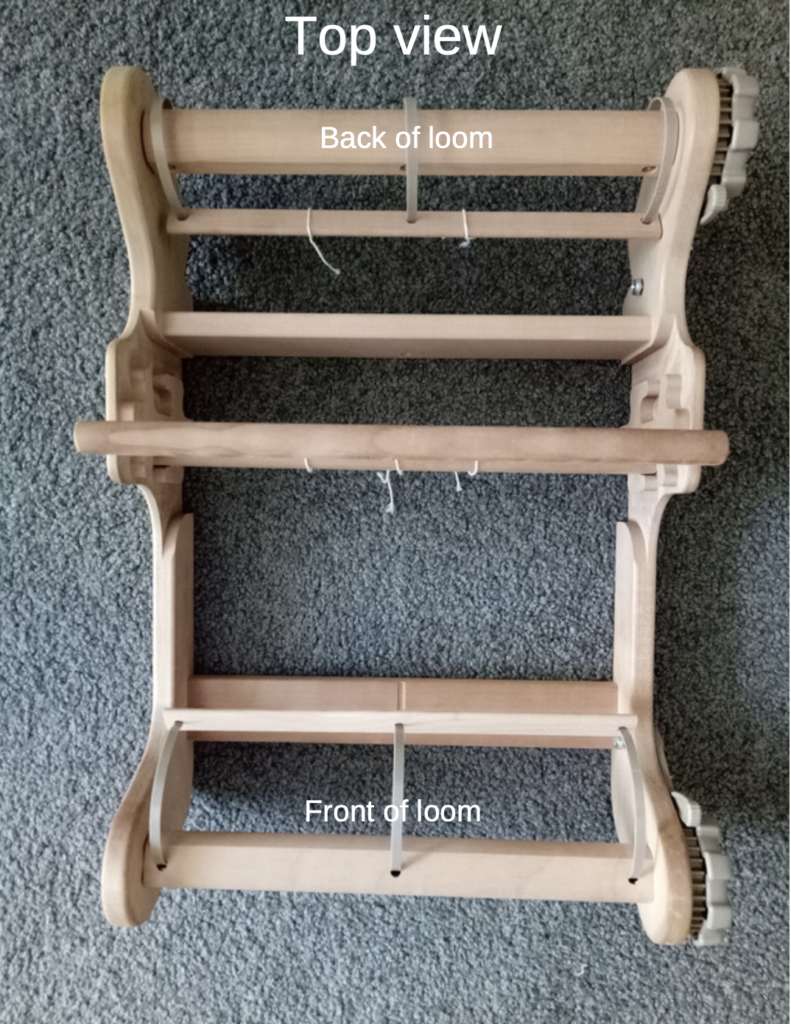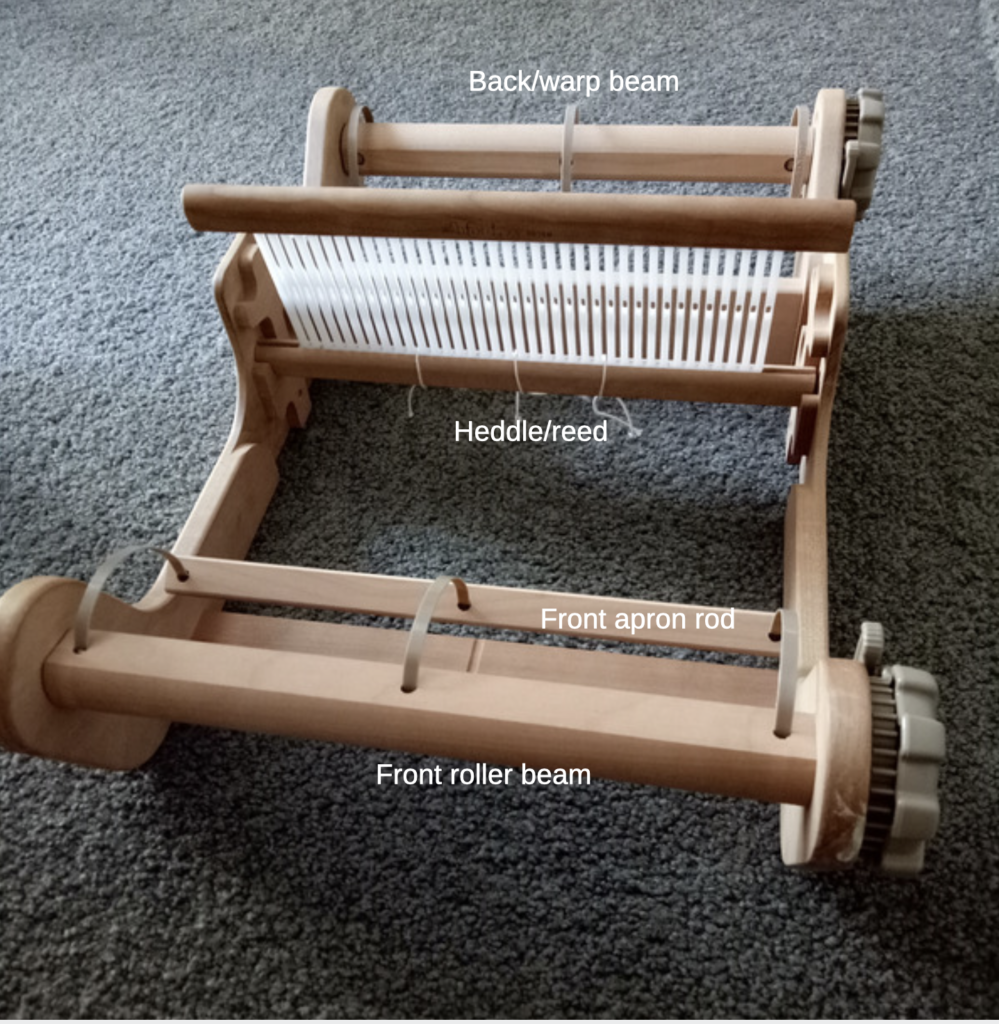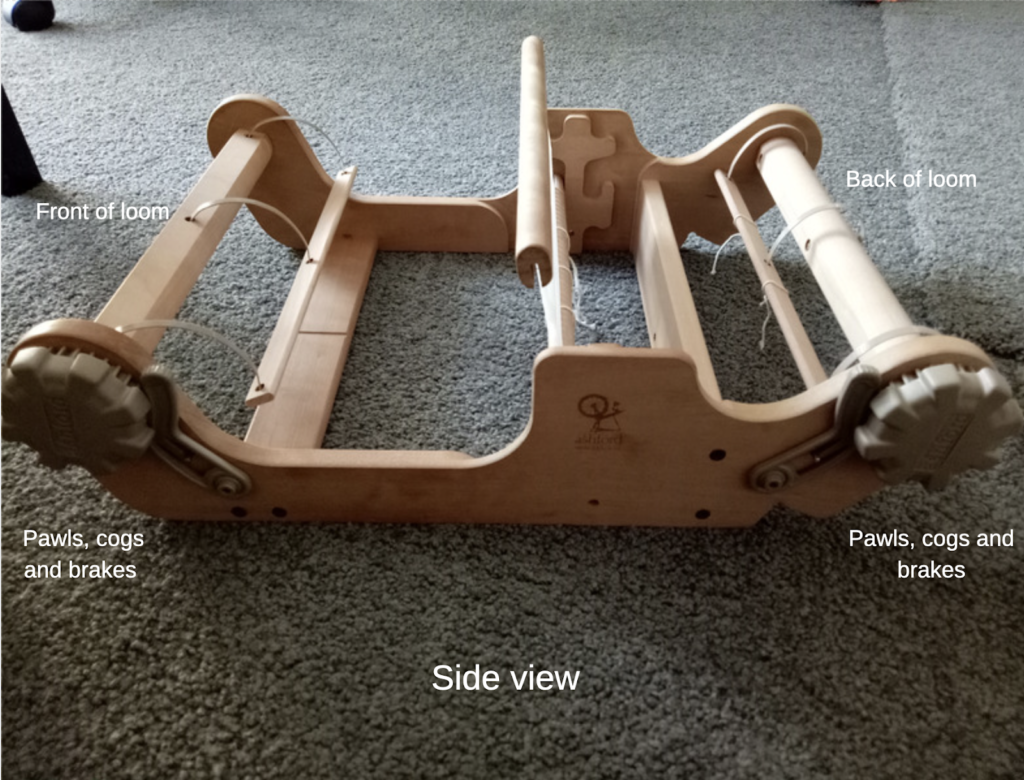Now you’re ready to wind on your warp.
Your warp is secure with the choke tie you already put in place. If you need to read over the last lesson, please go here first.
Decision time! Are you going to warp with a helper or independently? This decision can often come down to whether you have someone to help you or not. But, if this is your first warp or if you’re not too confident with warping yet, I always recommend warping with a helper. This is a time to get to know your next door neighbour better! Or invite that friend or family member around for a cuppa and just casually mention that you need their help with something and that it won’t take but a minute!
*This post contains affiliate links
If you feel like you really need more information on warping at this stage, I have an excellent class, Warping for Beginners.
To roll your warp onto the back beam your will need something to use a separator. In the Youtube video demonstration I use my cardboard separators (also known as warping sticks) but you can also use a roll of paper or a blind if you prefer a continuous separator.
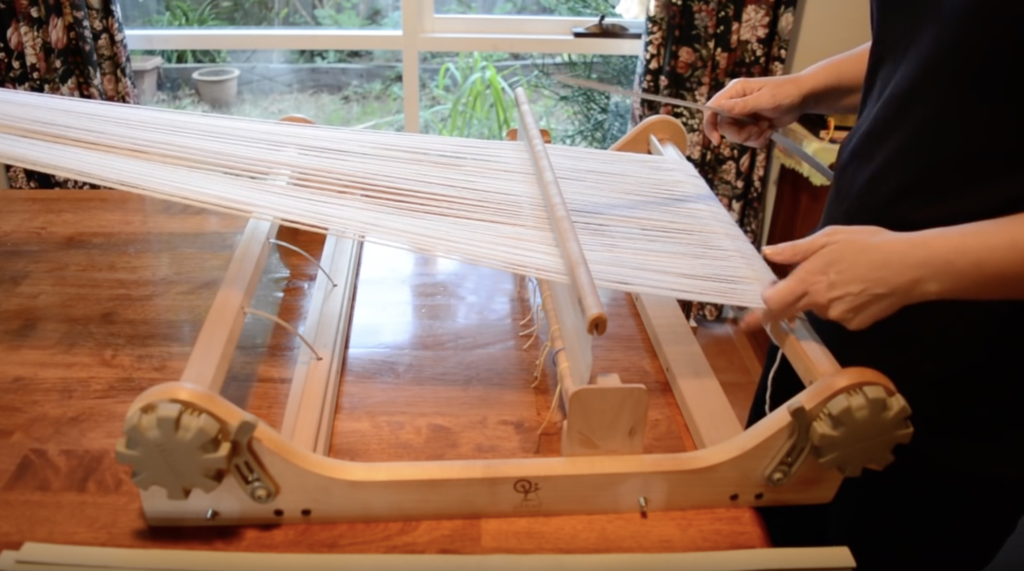
Having a helper takes the pressure off the newer weaver. You can concentrate on turning the clicker and pawl system which rolls the warp on without having to worry about uneven tension. It also means that you have two hands free instead of just one.
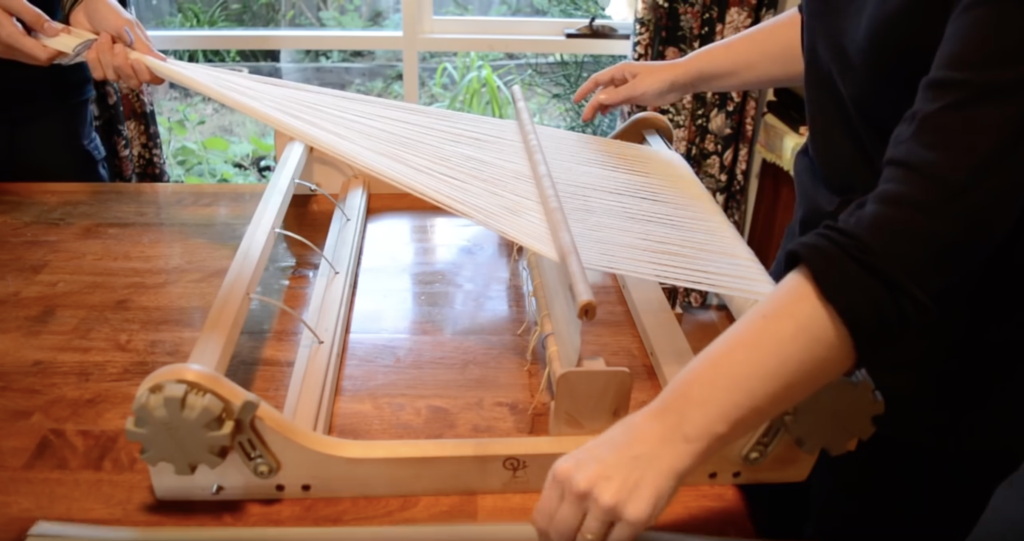
Place 1 cardboard separator for each full warp rotation.
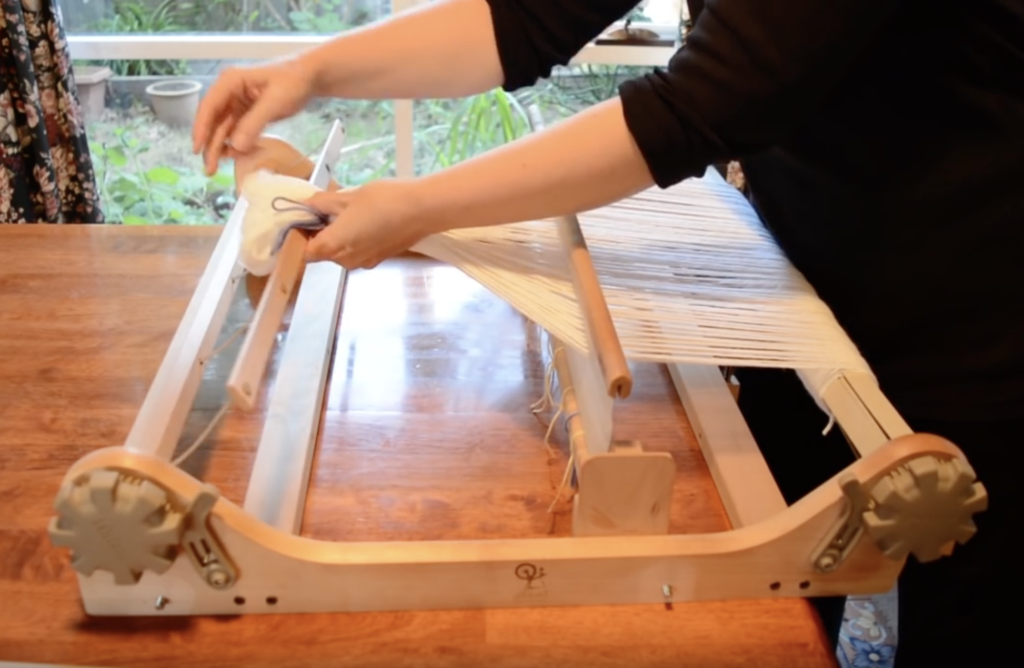
I like to keep winding until the end of the warp is just over the front apron bar. This ensures that I have enough length in the warp for comfortable threading.
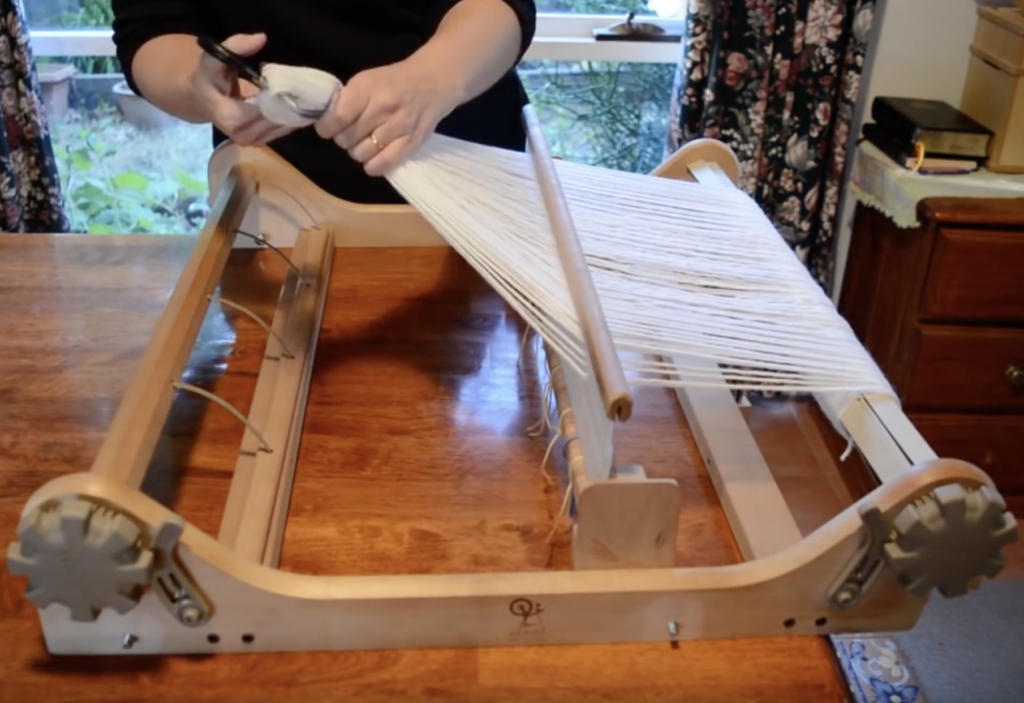
At this point I cut the warp ends, then undo the choke tie.
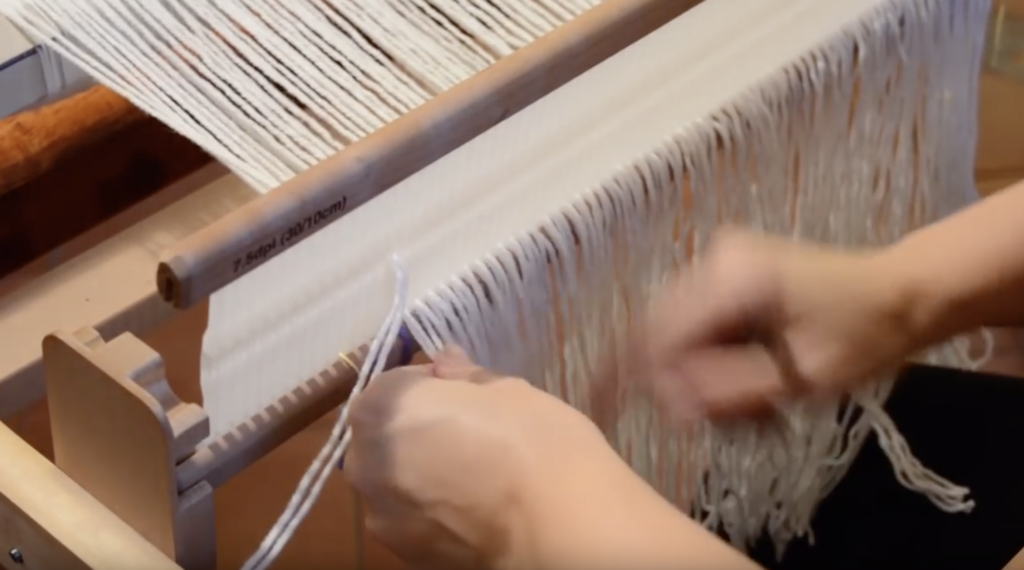
Time to begin threading! Before you start, I highly recommend that you watch my free Threading Tips video. So, for plain weave, I thread one in the left hole and leave one in the slot. It doesn’t matter whether you thread in the right or the left hole, but the left is my habit and I stick to it.
Keep threading in this simple fashion right across the width of the warp.
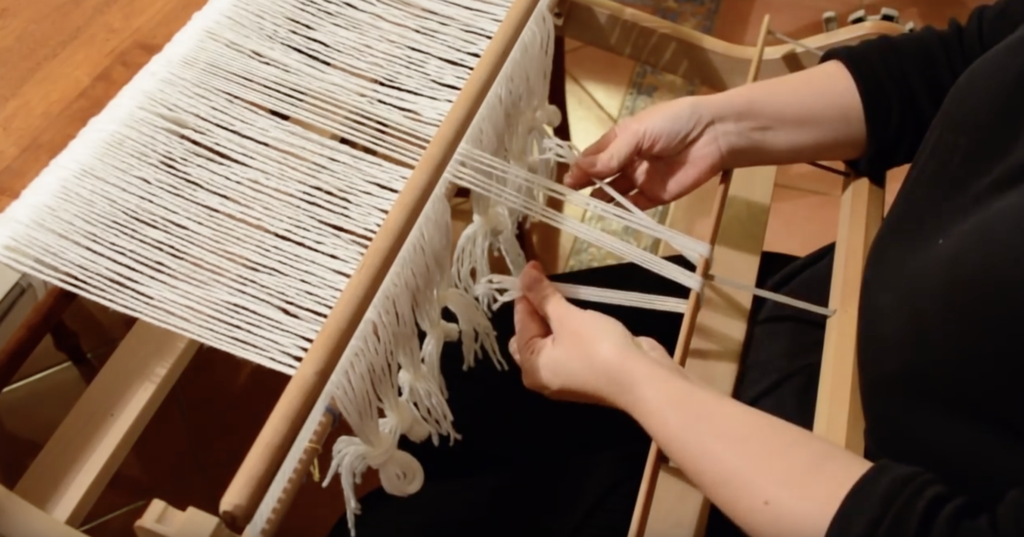
Now we tie on to the apron rod. Some weavers prefer to leash on but I only do that for slippery threads as I find I get better tension when I tie directly on to the rod. For this section, I will refer you to the video near the end of this post – it is much easier to show than to explain the knotting system.
Go back over your knots and tighten them all to an equal tension. You are trying to obtain firm and consistent tension, not necessarily to get them as tight as you can. If you have consistent tension, everything will tighten up when you advance the warp in readiness for weaving.
Here is the video that goes along with today’s lesson, I think you will find it very helpful!
Well, now we are almost ready to weave and things start to get exciting. Join me next time for options for putting in a header and beginning to weave!
Until next time…
Happy Weaving!

